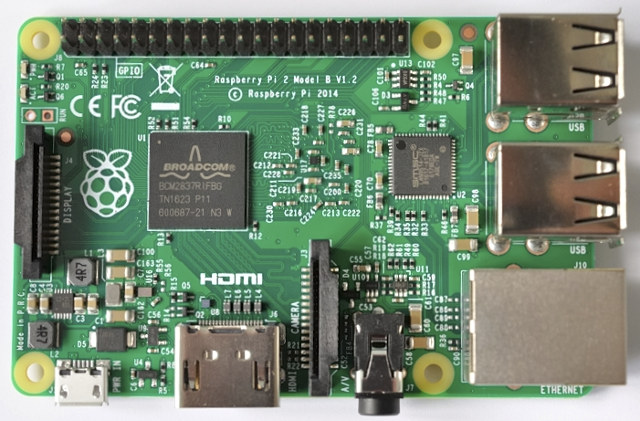With the launch of Raspberry Pi 3 based on Broadcom BCM2837 quad core Cortex A53 processor earlier this year, sales of Raspberry Pi 2 boards have suffering meaning the demand for Broadcom BCM2836 quad core Cortex A7 processor has also been reduced, and it appears the Raspberry Pi foundation has now launched Raspberry Pi 2 V1.2 with the faster BCM2837 processor.
 The new Raspberry Pi 2 v1.2 runs BCM2837 CPU cores up to 900 MHz, instead of 1.2 GHz on RPi 3, and includes 1 GB RAM. The main difference with Raspberry Pi 3 is the lack of the WiFi and Bluetooth module, which may also prevent some UART issues if you want to access the serial console or use an add-on board with UART.
The new Raspberry Pi 2 v1.2 runs BCM2837 CPU cores up to 900 MHz, instead of 1.2 GHz on RPi 3, and includes 1 GB RAM. The main difference with Raspberry Pi 3 is the lack of the WiFi and Bluetooth module, which may also prevent some UART issues if you want to access the serial console or use an add-on board with UART.
Since both boards cost the same ($35), most people should probably stick with Raspberry Pi 3, unless you’d rather not have any wireless module on board for security reasons. You can purchase Raspberry Pi 2 v1.2 on Farnell, CPC Farnell, Newark and others.
Via Raspi.TV

Jean-Luc started CNX Software in 2010 as a part-time endeavor, before quitting his job as a software engineering manager, and starting to write daily news, and reviews full time later in 2011.
Support CNX Software! Donate via cryptocurrencies, become a Patron on Patreon, or purchase goods on Amazon or Aliexpress




